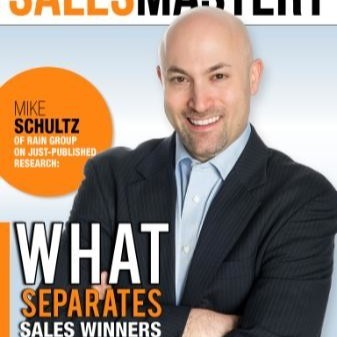B2B sales strategies and trends
4 Key Risks to Your Deals and How to Minimize Them
Editor's Note: This guest post was contributed by Mike Schultz, President at RAIN Group.
Imagine this scenario. You’re a seller who just engaged a buyer about an opportunity and they’re interested. Conversations progress and are going well, but then the buyer decides they don’t want to proceed.
The return on investment was tremendous; more than a 30-times ROI was easy to see.
So, what happened? How did the buyer not see this as an easy “yes?”
Often times in sales, buyers may see the ROI case, they may love to achieve the ROI, but there’s one major problem—they don’t believe it.
It’s too risky.
Buyers are Skeptical
Forty years ago, marketers and sellers weren’t focused as much on results and impact. The transition away from the features and benefits had just begun.
Today, every company's marketing and sales message promises results—often wild results—as their first foot forward. Yet while everyone is promising results, buyers regularly report disappointment.
Bain & Company conducted a study where 375 companies were asked if they believed they delivered a "superior value proposition" to clients. Of those, 80% agreed.
Bain then asked the clients of those same companies if they agreed. Only 8% did.
The problem is that buyers don't believe they get what they expect or were promised. They've been burned in the past and are skeptical of sellers and their exaggerated claims. It's just too risky.
In a vacuum, risk and reward move together—the higher the reward, the greater the perception of risk. As a seller, you have the power to either minimize or heighten this perception. And if you want to win the sale, you must focus on diminishing it.
In the RAIN Group Center for Sales Research study, What Sales Winners Do Differently, we analyzed over 700 B2B purchases. One of the key findings was that minimizing risk has increased in importance according to buyers, and the sellers who win are much more attuned to risk than second-place finishers. It’s not surprising given the fact that buyers have been burned in the past.
Yet for every 10 pieces of advice you find about demonstrating the impact case and the ROI to buyers, you may find one piece of advice about minimizing the perception of risk in sales. If this is a key factor to winning sales, why is it rarely discussed?
4 Categories of Risk and How to Minimize Risk
There are the four categories buyers tend to perceive risk. To win you must minimize risk in each of these categories:
1. You, the Seller
Buyers have to believe, and believe in, you, the seller. They need to trust you and your advice.
Risk is lessened when you demonstrate intimacy, competency, integrity, and reliability. Spend time getting to know your buyers well and show them that you know what you’re doing. Find ways to illustrate that you keep their best interest in mind at all times. Lastly, deliver on what you promise. Always.
When buyers perceive the risk in you, the seller, to be too high, they won't take your advice, they won't trust your motives, they won't seek to build a relationship with you, and ultimately, they won't buy from you.
2. Your Offering
Buyers have to believe the product or service will perform as advertised. They need to be confident that it will be implemented, completed, and operate properly. If they have any reservations that it won't work as it's supposed to, won't get adopted, or won't last very long, then the risk is too high for the buyer to move forward.
Spend the necessary time with them to ensure they believe in the product or service. If they don’t, the opportunity will go south quick.
3. Your Company
Buyers need to believe your company is the right partner for them. When evaluating a purchase, buyers ask themselves, "Should I align with this company? Are they a good partner for us?"
When buyers believe you are a good partner, they tend to trust the company, believe it's a good company to associate with, believe the company will be around for the long term and will grow with them, and believe that if there are problems, the company will resolve them.
Buyers may trust your advice and like your offerings, but if your company is perceived as risky, they will look to align with one of your competitors.
4. The Outcome
Buyers need to believe they will achieve the promised results in an acceptable timeframe. They need to be confident that they’re making a good investment. They need to believe the result will be achieved, and that the best way to achieve it is with your help.
Share success stories and case studies from other clients you’ve worked with. Offer references. Offer a guarantee. Share how you will help them avoid potential obstacles. The more you can tangiblize the outcome and prove to them you’ve helped others get there, the more likely they are to trust that the outcome is indeed achievable.
Buyers may trust you, your offering, and your company, but if they don't believe in the outcome, they will take no action because they won’t think it’s worth it.
It's up to you to discover which categories are most important to each individual buyer and to minimize risk in each category. At the end of the day, if you can get your buyers to believe—in you, your offering, your company, and the outcome you say you can achieve—then you've got a good chance of winning the sale.
For more insight into the sales process and how to master it, subscribe today to the LinkedIn Sales Blog.
Topics: B2B sales strategies and trends
Related articles




